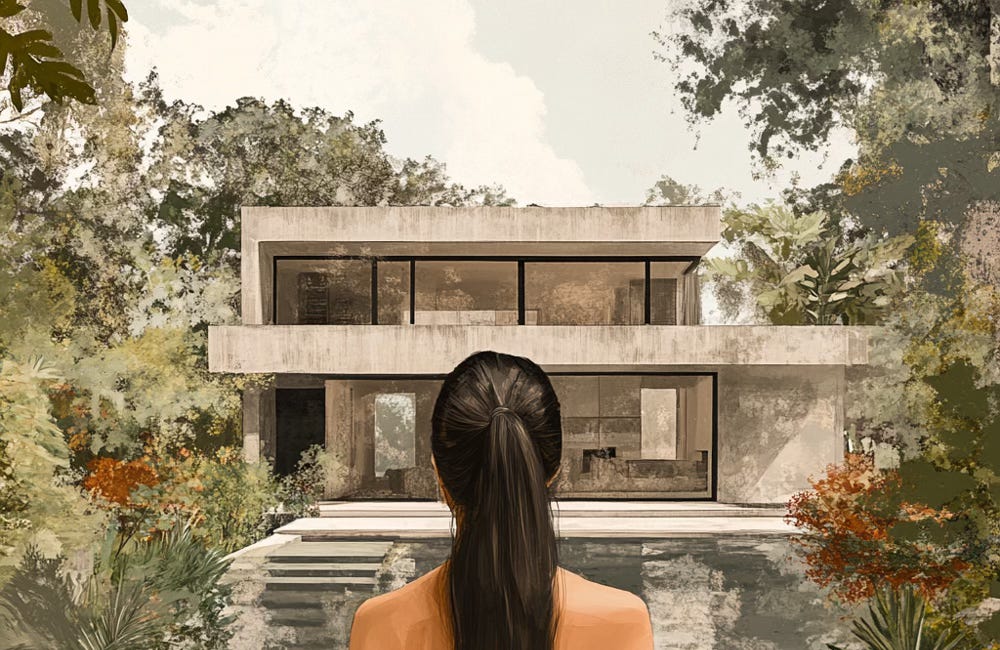I recently read 6 Top 2025 Wellness Trends for Residential Real Estate in Forbes, and honestly—it’s exciting to see some of the wellness home themes I’ve been banging on about for years finally going mainstream.
Brain-Friendly Buildings
We should absolutely be designing for our nervous systems.
Neuroaesthetics, biophilia, sensory comfort—this is the future of intelligent design. I’ve spoken a lot about how spaces affect our emotions and cognition. This isn’t fluff—it’s neuroscience.
Read my full post on this here:
What Is Your Space Saying to Your Brain?
I’ve always been fascinated by how our brains work—why certain things make us feel calm, inspired, or stressed.
AI-Integrated Wellness Ecosystems
Smart homes that adapt to your sleep, air quality, even stress levels? Incredible.
But here’s my concern: what about the EMFs?
I love smart everything—but we have to talk about how we’re managing electromagnetic radiation. Otherwise, we might be solving one problem while quietly creating another.
Live, Work, Zen
The rise of “wellness hubs” where residential and recreational spaces are seamlessly integrated might just be the reset button modern living needs.
And it’s something I’ve noticed even more since Covid.
That time really forced a collective pause and with it, a deep re-evaluation of how and where we live.
People aren’t just looking for a house anymore.
They’re looking for a lifestyle that works and to live in communities where health isn’t something you have to chase. They want health built in.
Walkable neighborhoods with green spaces. Places to connect, eat well, move your body, access healthcare, bump into your neighbors, and feel part of something.
These are the things that make life richer—and healthier.
It’s the “community principle” in Building Biology brought to life.
We’re wired for connection and rhythm, not concrete boxes and gridlock.
That’s the future of real luxury: not more square footage, but more meaning in the spaces we move through every day.
Climate Resilience
Absolutely necessary.
A home that can’t withstand the world it’s built in is not a wellness home—it’s a liability. How can existing homes be adapted for wildfires, floods, or power grid issues?
Resilience should be as core to wellness as clean water or fresh air.
But it’s not just about protecting the building—it’s about protecting the people inside. And this is where Building Biology stands apart from the typical green building movement.
While sustainability focuses on the planet Building Biology keeps human health at the centre alongside environmental responsibility.
The two must go hand in hand.
We need homes that not only lower emissions and use resources wisely, but also shield us from the increasingly unstable world outside—without compromising our biology inside.
Dig deeper here:
Building Biology vs. Green Building: Why Your Home’s Health Matters More Than You Think
Most people assume that if a building is energy-efficient or sustainably built, it must be good for their health. But what if I told you that’s not always the case?
Gen Z + Gen Alpha Homes
The next generation of homebuyers will want modular, tech-forward homes that adapt to work, learning, and wellness.
Their “phygital” lifestyle demands spaces that bridge physical and digital.
But again, how do we do this while protecting sleep, focus, and long-term health from the invisible stressors like EMFs, bad lighting, and poor air quality?
Placemaking + Placekeeping
So often, wellness real estate forgets the human part—community, story, history, soul.
This trend acknowledges that wellness isn’t just individual—it’s cultural and communal.
And I love that.
It’s also deeply aligned with Building Biology and Biophilia.
Read more here:
Reimagining Luxury: how the science of Building Biology changed everything for me
I first learned about Building Biology during one of my deep dives into health podcasts. (Honestly, I can’t even remember which biohacker it was now—there have been so many! I’m a bit of a podcast addict) The term popped up, and I thought, ‘Wait, what is this?’
Wellness in design isn’t a trend. It’s a necessity.
And as exciting as all this innovation is, we have to keep asking: Who is this really serving? And are we designing homes that truly help us thrive—or just selling the aesthetic of superficial wellness?









